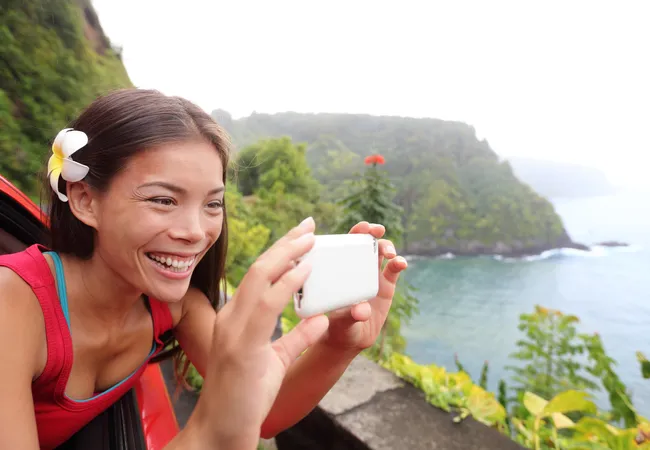
Road to Hana: Loop vs. Out-and-Back Driving Guide | Shaka Guide

UPDATE (May 7, 2025): The back road to Hana (past Kipahulu/Haleakalā National Park) is closed to non-residents on weekdays but open on weekends. For safety, don’t attempt the loop if closure signs are posted. Until it reopens, we recommend the classic out-and-back route.
Key Takeaways
- The classic out-and-back takes 10–12 hours, offers reliable conditions, and allows turning back anytime.
- The full loop is scenic and remote but risky, with closures, rough roads, and limited amenities.
- Start early, pack essentials, download offline maps, and always respect locals, parking rules, and private property.
TABLE OF CONTENTS:
- Introduction
- What is the Road to Hana?
- The Classic Out-and-Back Route
- The Full Loop Road to Hana Route
- Key Considerations When Choosing a Road to Hana Route
- Tips for Driving the Road to Hana
- FAQs About the Road to Hana
Introduction
Here at Shaka Guide, we like to think of ourselves as your local Road to Hana guide. And we love sharing our knowledge--and love--of this region with visitors! We know driving the road can be intimidating for first-timers, but don't let that stop you.
When we talk about the Road to Hana, we mean the scenic stretch of Hana Highway that begins as you approach Pa'ia Town from Kahului and goes all the way to the turnaround point at Kipahulu inside Haleakala National Park.
Once you reach Kipahulu, you have a choice: You can
- turn around and head back the same way you came, or
- continue past Kipahulu and make a full loop around Haleakala.
Choosing the right route depends on how much time you have, what you want to see, your driving skills, and current road conditions.
In this article, we’ll cover the differences between both routes so you can choose the one that best fits your timeline and sense of adventure.
What is the Road to Hana?
The Road to Hana is considered one of the most spectacular scenic drives in Hawaii!
Beginning in Kahului and ending at Kipahulu in Haelakala National Park, this 65-mile stretch of coastal highway features over 600 hairpin curves, over 50 stone bridges, and numerous scenic stops featuring:
- stunning waterfalls
- pristine beaches
- lush, tropical rainforests
- a lava cave, and
- historic Hana Town
Along the way, you can swim by a waterfall, hike through the rainforest, visit a black sand beach, and sample some local grinds–like Aunty Sandy’s famous banana bread. (Our favorite!)
Whether you choose the out-and-back route or continue around East Maui in a full loop, get ready for an unforgettable journey on the Road to Hana!
The Classic Out-and-Back Route
Overview
The most popular way to drive the Road to Hana is to turn around at Kipahulu and come back the same way.
This classic out-and-back route is roughly 125 miles round-trip from Kahului to Kipahulu (Haleakala National Park) and back.
It takes about 5 hours to drive both ways without stops.
But with so many sights to see and curves to navigate, plan to spend 10-12 hours to get the most out of your journey.
Advantages of the Out-and-Back Road to Hana Route
Driving the same route on the return trip means getting to enjoy the same spectacular scenery again–but from a totally different perspective. You’ll also be able to:
- Stop at your favorite viewpoints again
- Visit sites or vendors you may have missed earlier
- avoid unexpected road conditions or closures
- drive with confidence since you’ve already navigated it once, and
- Turn around at any point if you are running short on time.
Disadvantages of the Out-and-Back Road to Hana Route
The main disadvantages of the Out-and-Back Road to Hana Route are the repetitive return drive and the heavy traffic. You’ll navigate the same 600 curves twice, which can feel monotonous, and because this route is the most popular, expect large crowds of tourists and congestion in both directions.
The Full Loop Road to Hana Route
Overview
The full loop route runs about 100 miles, continuing from Kipahulu along Maui’s remote southern coast—known as the “Back Road to Hana”—before turning north at Ulupalakua and ending in Kula.
With stops for hiking, swimming, and sightseeing, expect the journey to take 10–12 hours.
Advantages of the Full Loop Route
The biggest advantages of the Full Loop Route are the unique scenery and the lack of traffic.
This drive takes you beyond the popular out-and-back route, showing a side of Maui most tourists never see.
Along the way, you’ll pass through lush rainforests, open ranchland, rugged lava fields, and misty mountain forests — some of the most spectacular landscapes in Hawaii.
Disadvantages of the Full Loop Route
On the other side, the main disadvantages of the Full Loop Route are the hazardous road conditions and frequent closures past Kipahulu.
This remote stretch is often shut down due to washouts, landslides, or construction.
Even when open, it includes rough, unpaved sections, sheer drop-offs, falling rocks, and a narrow one-lane road that can be dangerous to navigate.
Be prepared for:
- No cell service
- Extremely rough road conditions (Four-wheel drive vehicles are recommended!)
- Limited facilities (Fewer food, gas, restroom stops, and emergency services)
- Rental car restrictions (Some companies prohibit driving this way)
- Road hazards (Falling rocks, sheer drop-offs, and lots of potholes)
- A narrow, one-lane road (Few places to pull over for oncoming traffic)
- Blind corners (Honk first to warn oncoming traffic!)
- Frequent road closures
NOTE: Check with a local business in Pa’ia or Hana to see if the back road is open. If closed to visitors, turn back the same way. For safety and respect, never drive the back road when closed.
Key Considerations When Choosing a Road to Hana Route
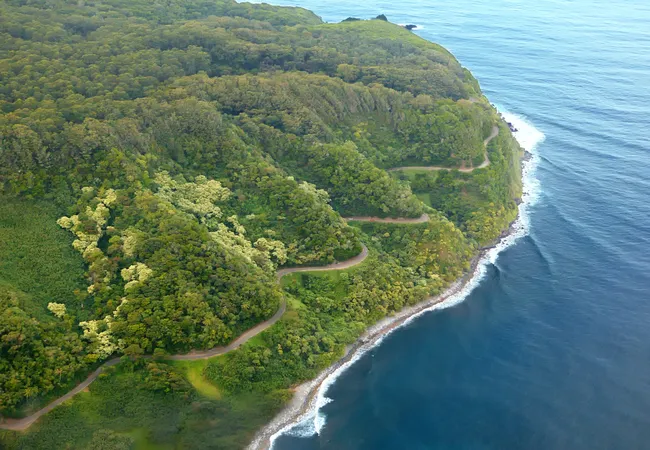
Now that you know the pros and cons of each route, which one is best for you? It depends on how much time you have, how comfortable you are driving, and how adventurous you want to be!
1. Time Commitment
To get the most out of your Road to Hana adventure, we recommend budgeting 10-12 hours for the entire drive–no matter which direction you go.
Just keep in mind: if you choose the full loop route, you’re committing to a full day of travel.
The out-and-back option gives you more flexibility—you can turn around and head back earlier if needed.
2. Road Conditions and Driving Difficulty
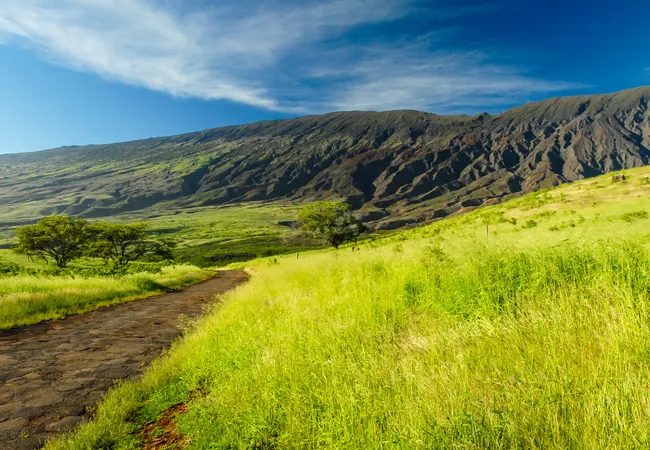
The Road to Hana between Kahului and Kipahulu is fairly well-maintained, can be driven with any kind of vehicle, and is almost always open, making it a more reliable choice than the full loop option.
In contrast, the second half of the full loop route (past Kipahulu on the back road) is poorly maintained and often closed.
Even when it is open, you’ll have to navigate potholes and dirt roads, drive next to cliffs with rusty guardrails, and maneuver along one-lane coastal roads with blind curves.
Although some people have driven the back road in a two-wheel-drive vehicle, a four-wheel drive is definitely preferable.
You should also know that most rental car agreements prohibit driving on unpaved roads, and your insurance may not cover you if you break down.
Tows are crazy expensive and will take the full day. So, if you do choose to drive the back road, you do so at your own risk.
3. Best Route for Families vs. Adventurers
Families
The out-and-back route is a great choice for families. There are a number of amenities and facilities on the main highway, making it way more convenient for bathroom breaks on the drive back.
Plus, if the kids are hungry, the Road to Hana offers numerous options for food.
Adventurers
When it’s open, the full loop option is great for adventure seekers looking for a one-of-a-kind Maui experience!
If off-roading is your thing, and the thrill of skirting steep drop-offs to one side and dodging falling boulders on the other fills you with joy, then this is the route for you!
Just pack plenty of water, snacks, and patience. Make sure your spare tire is filled and you have an emergency kit ready to go.
Tips for Driving the Road to Hana
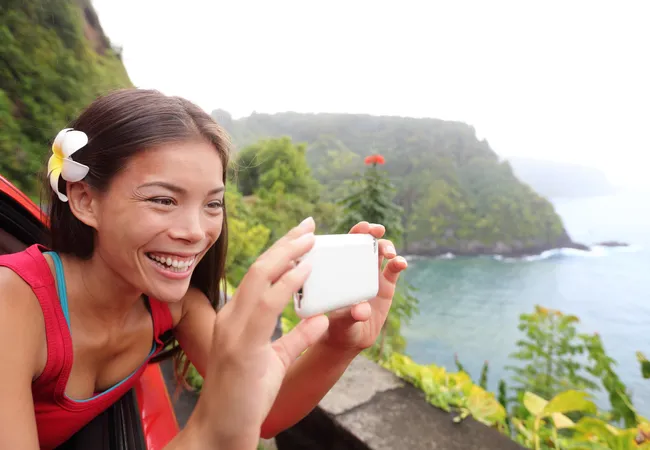
Whichever route you choose, here are some helpful tips to make the most of your epic road trip.
Tip #1: Start Early
If you want to cram in as many activities and sights as possible in one day, plan to start your trip from Kahului no later than 8 a.m.
You’ll have a better chance of avoiding traffic, and you’ll get the most out of the daylight hours.
Remember, in the summer, the sun goes down in Hawaii earlier than on the mainland, so if you don’t want to drive at night, you’ll want to begin your return trip around 4 p.m.
Tip #2: Pack Essentials
Although you’ll find a number of roadside vendors along the way and a few stores in Hana Town, it’s a good idea to come prepared. You’ll want to bring:
- plenty of water
- food and snacks
- emergency supplies
- swimsuits, towels, and extra clothes if you plan to swim
- hiking shoes
- bug spray & reef-safe sunscreen
- cash for roadside vendors, and
- a full tank of gas
The Hana Picnic Lunch Company in Pa’ia is a great place to grab a picnic lunch for the road, use the restroom, and ask about current road conditions or closures.
Tip #3: Download Offline Maps and Apps
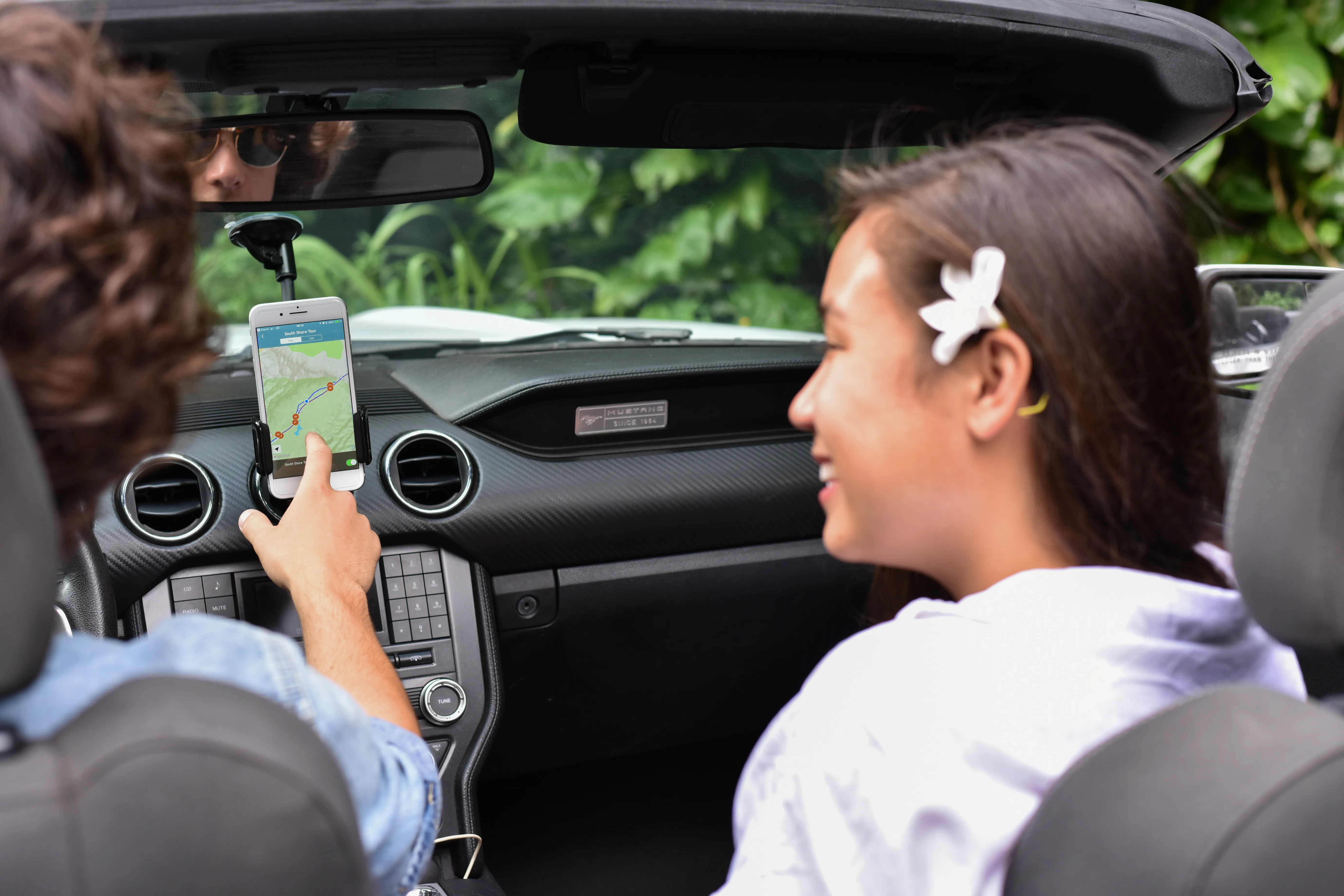
Because cell service is extremely limited, that means GPS apps may not work. You’ll want to download maps prior to starting so you can use them offline.
Planning to use the Shaka Guide app? Be sure to download our Road to Hana audio driving tour before heading out! It works offline and will give you turn-by-turn directions all the way to Hana and back!
Tip #4: Drive Cautiously
With over 600 curves and numerous one-lane bridges on the Road to Hana, you’ll need to employ your best driving skills at all times. Here are a few tips to help keep you safe on the road:
- Stick to the speed limit. Driving too fast could be a recipe for disaster. Take it slow and easy–you’re on vacation after all!
- Slow down for sharp curves.
- Use pull-outs to let local residents and faster drivers pass.. (They’ll appreciate it!)
- Do not stop or park along the highway or on bridges.
- Instead, park legally in designated parking areas. (“No Parking” signs mean no parking–unless you want to pay big bucks for a ticket and a tow!)
- Take turns at one-lane bridges and yield to oncoming traffic.
- Avoid honking your horn. (It’s considered rude in Hawaii.) However, it’s okay to honk when going around blind curves.
- Lastly, stay focused and keep your eyes on the road.
Tip #5: Respect Local Communities
To visitors, Maui may seem like a tropical theme park, but to residents who live here–it’s home. Since we are guests, here are some ways we can show respect and aloha to our island hosts:
- Avoid blocking driveways.
- Respect private property. If you see a Do Not Enter, Kapu, or Private Property sign–then keep out and do not trespass, even if you see others doing it!
- Pick up your trash and keep Maui beautiful.
- Respect the wildlife by not touching or feeding them.
- Stay on designated trails to protect Maui’s fragile ecosystem.
- Do not take rocks home or stack rocks. This is considered disrespectful.
- Use the restrooms at state and county parks. Do not use the roadsides or bushes.
FAQs About the Road to Hana
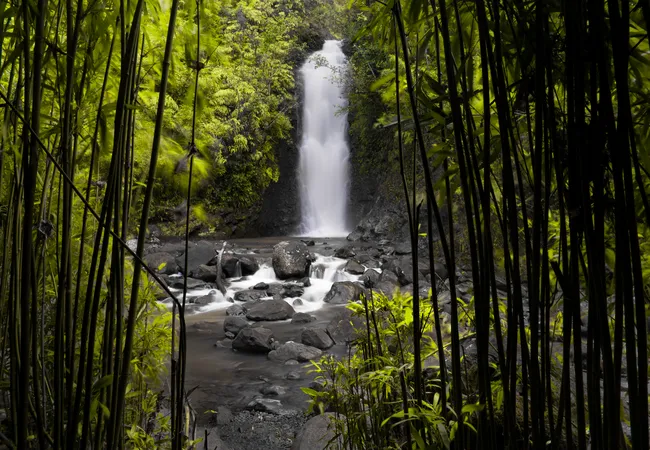
Is the Road to Hana open year-round?
Yes, the Road to Hana is open year-round, but weather conditions can impact travel. The Back Road to Hana, past Kipahulu, is sometimes closed due to poor road conditions.
What is the best time to drive the Road to Hana?
The best times to drive the Road to Hana are September, October, March, April, and May—these months offer fewer crowds, reasonable prices, and better weather. Any time of year can be great, but prices, crowds, and weather are the three main factors to consider.
Winter (November–March) brings lower airfare and accommodations, fewer families, and the chance to see migrating humpback whales, though it’s rainier. Summer (June–July) is sunny and warm, perfect for beaches and trails, but it’s the busiest and most expensive season.
No matter when you go, you can beat the crowds by traveling midweek (Tuesdays and Wednesdays) and starting early (before 8 a.m.).
Are rental cars allowed on the Full Loop route?
Rental cars are sometimes restricted on the Full Loop Route, as parts of the back road include rough dirt sections and poor guardrails. Some companies may void your insurance if you drive here. Always confirm with your rental car company before attempting this drive.
How long does it take to complete each route?
We recommend budgeting 10-12 hours to drive either route. This allows for plenty of time to stop and see the sights.
Is there cell service on the Road to Hana?
After Pa’ia, cell service on the Road to Hana is extremely limited and unreliable. Be prepared by downloading offline maps and navigation apps, taking screenshots of important information like directions or contact information, and making sure your vehicle is gassed up and in good condition.
Are there gas stations along the route?
There are two gas stations in Pa’ia and one in Hana. Your best bet is to fill up in Kahului or Pa’ia. The prices are high but better than in Hana. If you wait until you reach Hana, you’ll be paying over a dollar more per gallon!
What are the food options on the Road to Hana?
If you are hoping to eat out, there are several sit-down restaurants and cafes in Pa’ia and Hana, and a few in Kula. Otherwise, you’ll find plenty of local roadside vendors along the way. Note that some places have limited days or hours. Here are just a few of the great places to eat on the Road to Hana:
- Flatbread Company, Pa’ia
- Hana Picnic Lunch Company, Pa’ia
- Pa’ia Fish Market, Pa’ia
- Aunty Sandy’s Banana Bread, Ke’Anae Peninsula
- Coconut Glen’s
- Nahiku Marketplace
- Braddah Hutts BBQ Grill, Hana
- My Tita’s Cafe, Hana
- Thai Food by Pranee, Hana
Explore the Road to Hana with Shaka Guide
If you’ve made it this far—congratulations! You’re ready to choose your Road to Hana route, whether it’s the classic out-and-back or the adventurous full loop.
With Shaka Guide’s self-guided audio tour, you’ll get turn-by-turn directions, safety tips, and advice on where to stop and how to plan your day.
Click on the links below to see the itinerary for each tour:
- Shaka Guide’s Classic Road to Hana Tour
- Shaka Guide’s Loop Road to Hana
PLEASE NOTE: There is only one road into and out of Hana. Locals have to drive this road every day, and the thousands of daily drivers on this one-lane highway greatly impact their lives.
Please be respectful — do not park illegally, pay attention to signs, drive responsibly, and pull over to let locals pass.
Do not enter private property or visit sites that are unsafe. And, please remember to pick up your trash.
- For more on being a responsible traveler to Hawai'i, click here.
- You can also learn about proper Road to Hana etiquette here.
- And, before you travel to Hawai'i, be sure to take the Pono Pledge here.
Visiting Maui? Download our Maui Tour Bundle for 6 tours, including 3 Road to Hana Tours!
Like this article? Share it on Pinterest!
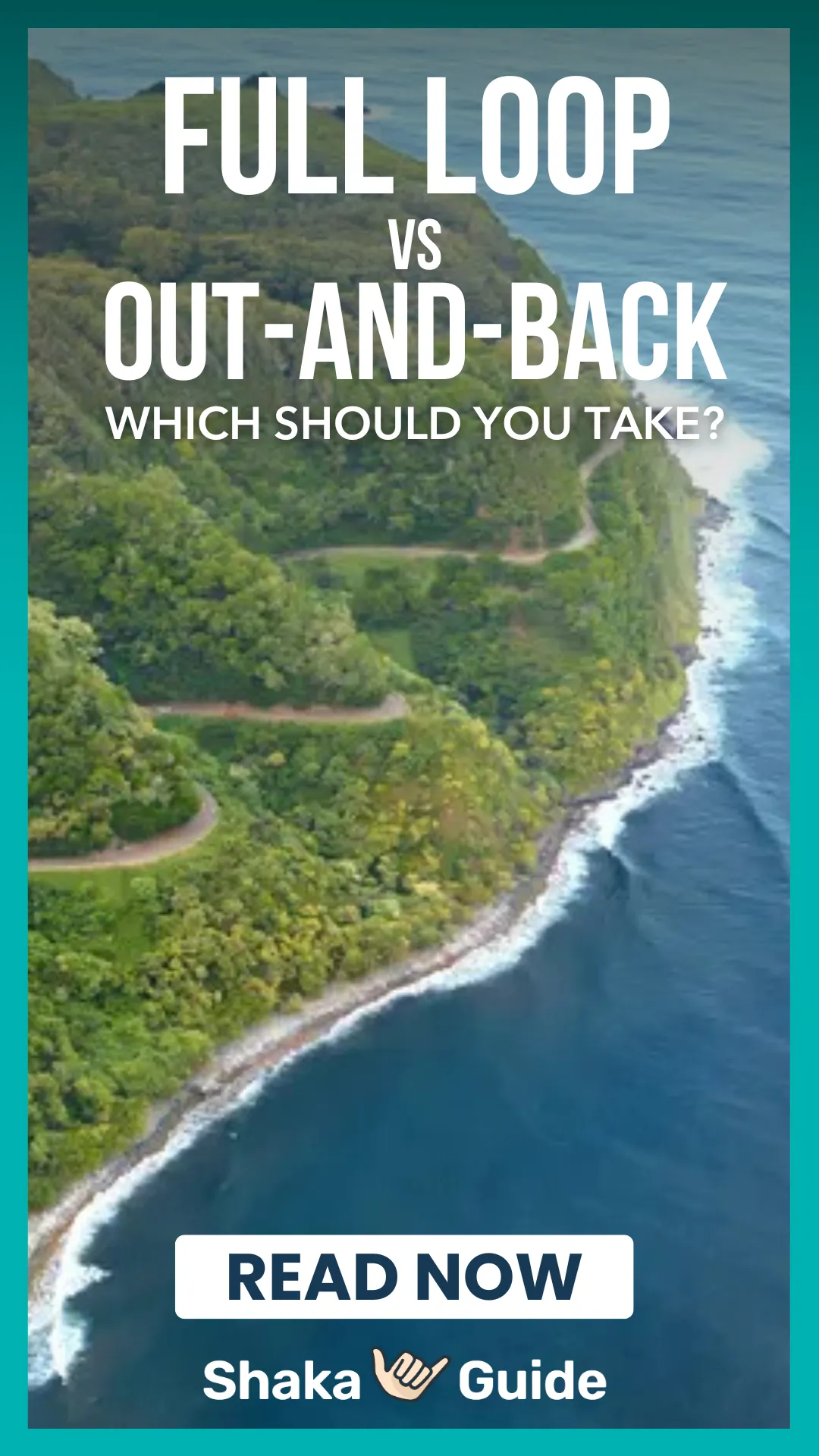
RELATED ARTICLES:
Is The Road To Hana Dangerous?
Which Shaka Guide Road to Hana Tour is Right for You?
Road To Hana: Guide To Having An Epic Driving Tour
The Scenic Hawaiian Roller Coaster: The Road to Hana
Road to Hana Map with Mile Markers

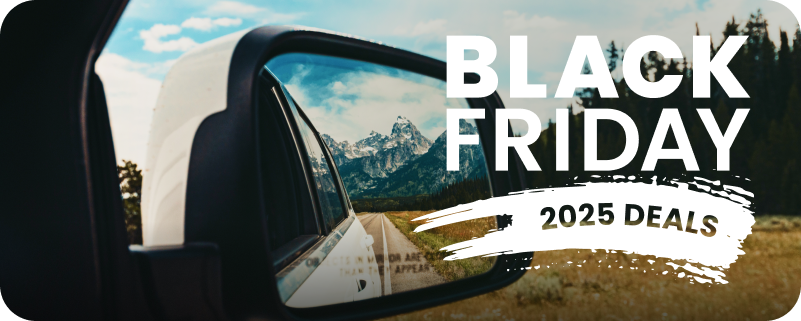


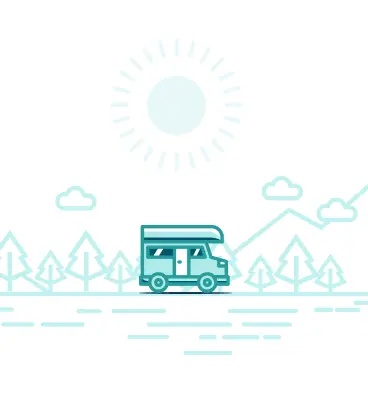











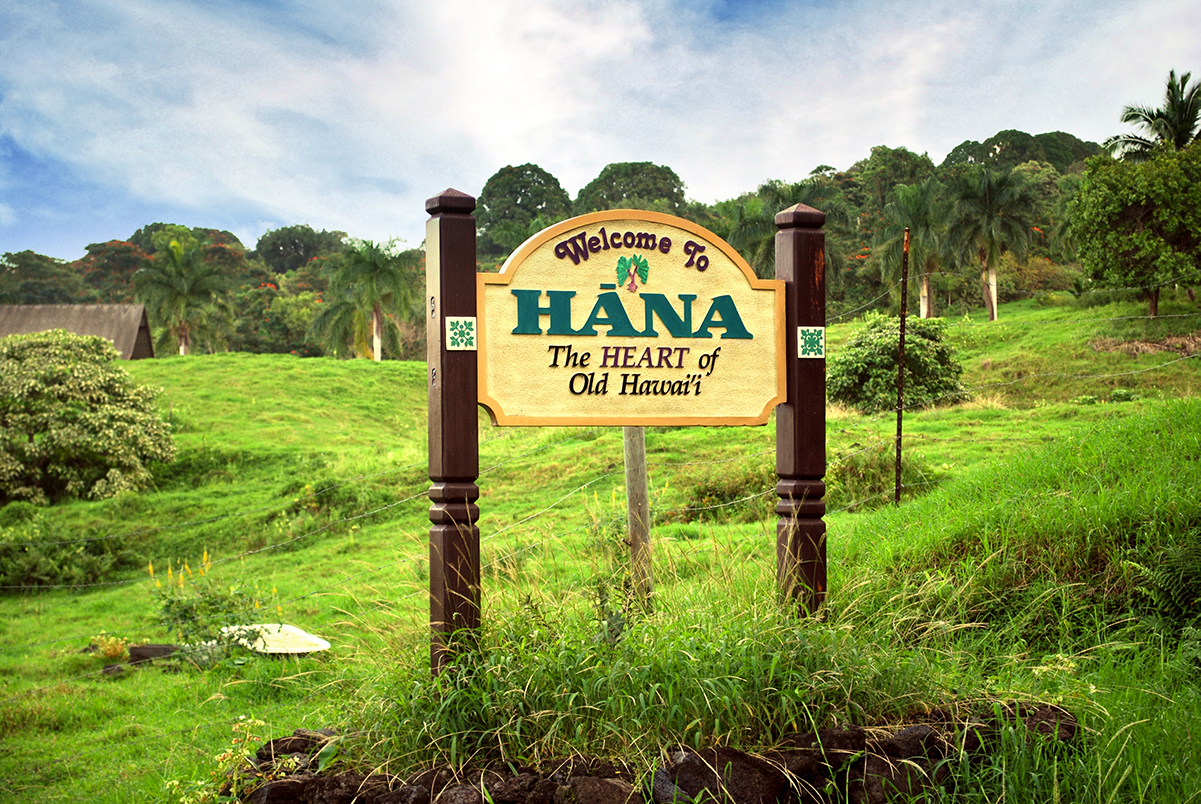

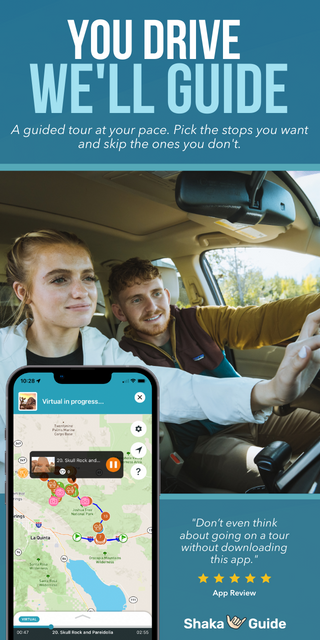










 to fuel your ride
to fuel your ride 
